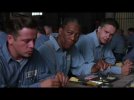If I had a do over I’d love me some tiltin’.Why does tilting have such a bad rep? Seems like it'd be cool to fly, watching from the cheap seats.
-
Please take a moment and update your account profile. If you have an updated account profile with basic information on why you are on Air Warriors it will help other people respond to your posts. How do you update your profile you ask?
Go here:
Edit Account Details and Profile
You are using an out of date browser. It may not display this or other websites correctly.
You should upgrade or use an alternative browser.
You should upgrade or use an alternative browser.
Seeking advice regarding platform
- Thread starter DaveKell
- Start date
I think FL Air Guard got them as well.V-22 is goodness. As previously stated, its high demand everywhere. The platform is just now finally hitting its stride operationally.
AF is increasing its CV-22 buy to include AFRES. Think of the sweet deal you could get doing a mid career inter service xfer to AFRES while you are flying airlines.
Life is good. You will love it.
Even better being V-22 qualed. DAF GS during the week flying FCF and Stan Eval, then on weekends flying as a ANG squadron pilot.I think FL Air Guard got them as well.
PMPT
Well-Known Member
Why does tilting have such a bad rep? Seems like it'd be cool to fly, watching from the cheap seats.
I suspect there's a somewhat unfair stigma with it being associated with lower NSS pilots ... but the reality is that ~80% of slots each week are for tilt and rotors, so it's kind of a silly thing because you'll get people in tilt and rotors with a broad range of NSSs. I know of at least one guy in Hawaii who had it as his #1 and was #1 in his class. So I think that stigma is probably more than a little unfair.
Another thing people might not like about it is that they keep hearing from older tilt guys that the hours aren't capable of fulfilling ATP mins (? I think) to go to the airlines. Although my understanding is that this might be changing.
I think very few single tour guys are hitting 1500 hrs.Another thing people might not like about it is that they keep hearing from older tilt guys that the hours aren't capable of fulfilling ATP mins (? I think) to go to the airlines. Although my understanding is that this might be changing.
PMPT
Well-Known Member
Isn't that reduced down to 750 for military fliers for a restricted ATP?I think very few single tour guys are hitting 1500 hrs.
Not being part of THE SHOW, I honestly don’t know. There are many here who will. I do know that I have friends in the helo world who got out with about 1200 hours and had to work crap jobs like CFI and heli tours just to get slightly better crap jobs in power line patrol so they could eventually fly EMS or law.Isn't that reduced down to 750 for military fliers for a restricted ATP?
@HokiePilot has some great posts about his transition.
Isn't that reduced down to 750 for military fliers for a restricted ATP?
Yes, if you are a winged military pilot then the FAA allows you to get a restricted ATP at 750 hours.
What @FLGUY and @PMPT said about 750 hours for military-trained pilots. The FAA ATP total flight time requirement is a tiered model, depending on where you got your pilot ratings (more or less that's mil, aviation college, or mom and pop learn to fly). If you have less than those 1500 hours but you got your training from one of the better tiers then you are eligible for a restricted ATP. Practically speaking that restriction means you can be a first officer on an airliner but not a captain, which is actually a moot point because the hour requirement for anybody to be a captain (regional or major) is much higher. The restriction is annotated on your pilot certificate and it gets removed after you get more hours and fill out the paperwork to get it taken off.I think very few single tour guys are hitting 1500 hrs.
Like anything, you can find a few strange situations and maybe loopholes. You could theoretically take a freshly winged mil guy or gal, which these days is about 200 hours, let's say they don't fly at all after winging (med, DOR, BUPERS screws them with an IA and staff duty instead of the RAG and a fleet tour, this is just a thought experiment). The person fleshes out the rest of those 750 hours in gliders, powered parachutes, hot air balloons, ultralights, they could still in theory be legally eligible for a restricted ATP right at 750 hours- and get hired to fly regional jets if they pass the interview.
That's not going to happen in reality but that 750 hour gate (for mil dudes) can be higher than you might think. Ten years ago when I was in the HTs and flying with brand new IPs, a lot of them had only 700-800 hours of total time on their TH-57 initial NATOPS check paperwork. Everybody knows the saying feast or famine and back then it was definitely a famine. Oh, and it showed. The difference in SA between an 800 hour guy and a 1500 hour guy was noticeable- not quite a safety of flight kind of way but in a "here's a couple things to think about that will make you a better pilot" kind of way. When I moved over to primary instruction, the flight hours story of first fleet tour people from big wing and tacair communities also varied from a lot to a little bit; it wasn't just a helo community thing.
That's mostly food for thought. Either way, the bar for entry is still higher than a 250 hour wet commerical rating like the "old days" (before the Colgan crash). The regional training departments work with people from all sorts of backgrounds and for the most part they try to get everybody up to speed. Since the airlines are moneymaking businesses and sometimes they badly need to fill seats, that can mean training is a pump, not a filter. Other times they can afford to be very picky. (Sometimes that "pump, not a filter" description fits mil flight training too...)
Told ya someone would know!
I suspect there's a somewhat unfair stigma with it being associated with lower NSS pilots ... but the reality is that ~80% of slots each week are for tilt and rotors, so it's kind of a silly thing because you'll get people in tilt and rotors with a broad range of NSSs. I know of at least one guy in Hawaii who had it as his #1 and was #1 in his class. So I think that stigma is probably more than a little unfair.
Another thing people might not like about it is that they keep hearing from older tilt guys that the hours aren't capable of fulfilling ATP mins (? I think) to go to the airlines. Although my understanding is that this might be changing.

All chopper dudes had jet grades. Don’t you know that?
Shut up! You hovered and you know you did.View attachment 30791
All chopper dudes had jet grades. Don’t you know that?
Best of both worldsShut up! You hovered and you know you did.

